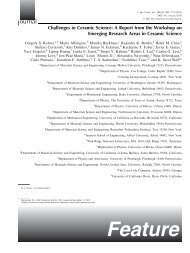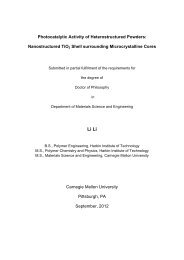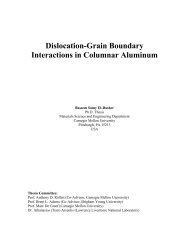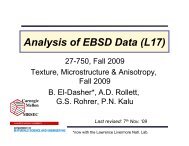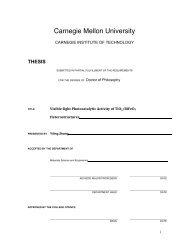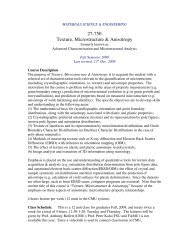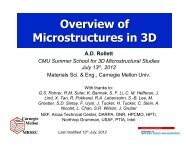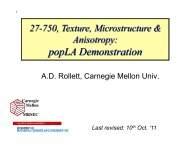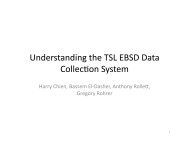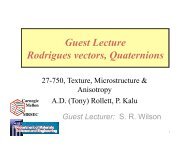¶ 3. Mathematical Representation of Crystal Orientation, Misorientation
¶ 3. Mathematical Representation of Crystal Orientation, Misorientation
¶ 3. Mathematical Representation of Crystal Orientation, Misorientation
Create successful ePaper yourself
Turn your PDF publications into a flip-book with our unique Google optimized e-Paper software.
If we write the OD as f(g) in the conventional manner, then we can calculate the intensity<br />
in the pole figure, P(w), by summing over all the symmetry operators and integrating<br />
over the range <strong>of</strong> Euler angles (also a sum if the OD is in discrete form). Note that the<br />
coordinates in the pole figure are determined by the relation above. More specifically,<br />
the three Euler angles in the expression below are not independent <strong>of</strong> one another and can<br />
be written in terms <strong>of</strong> a single parameter. The functional relationships are to be<br />
determined from the previous expression, i.e. that which relates the point, w, in pole<br />
figure space to a line in orientation space.<br />
( ( ) )<br />
∑<br />
P(w) = f a −1 ∫∫∫ ψ ,Θ,φ sinΘdψdΘdφ S (k) h<br />
8/27/09 44<br />
k



